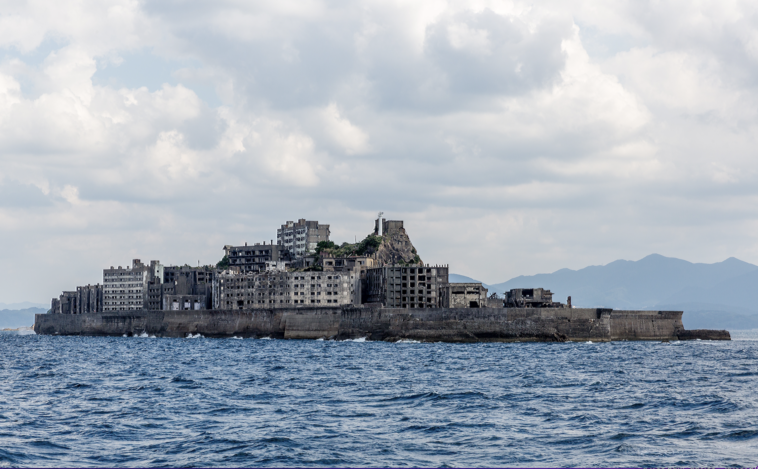Just in front of the Japanese coast, about nine miles from the city of Nagasaki, there sits a small abandoned island inhabited by no one but ghosts.
Hashima Island was once an important center for coal mining and symbolized Japan’s booming industrialization. From 1887 to 1974, it served as a coal facility. Mitsubishi bought the island in 1890. The island was nicknamed “Battleship Island” for its resemblance to a battleship.
Multiple buildings were constructed on the island around the time of World War Two. The Japanese used Chinese and Korean prisoners as forced labor to build the structures.
In 1916, the first concrete building was erected. It was a nine-story apartment block for the miners to live in and provided protection from the typhoons that frequently overwhelmed the island.
The harsh, unsafe working conditions caused the deaths of over a thousand workers. When past workers described their experiences, they revealed that the weather was extremely humid, food was limited, and they were often beaten. Additionally, the island was very small, so each person was allowed only five feet of living space.
In 1974, the mines were depleted of coal and shut down. As a result, everyone left the island, and with no one to maintain them, many of the buildings collapsed into ruins. At its peak, the population of the island reached 5,259 residents in 1959.
Even when the number of residents dropped to zero, Mitsubishi continued its ownership of the island. After a large number of the crumbling buildings were restored, the island was open for visitors and became a tourist site in 2009.
In 2015, Hashima Island was named a UNESCO World Heritage Historic Site, but South Korea objected to it because of the excruciating circumstances that wartime slave laborers were forced to undergo.
Japan’s ambassador to UNESCO announced that an information center detailing the history and circumstances of the workers would be made available at the tourist site.

Sign up for Chip Chick’s newsletter and get stories like this delivered to your inbox.


